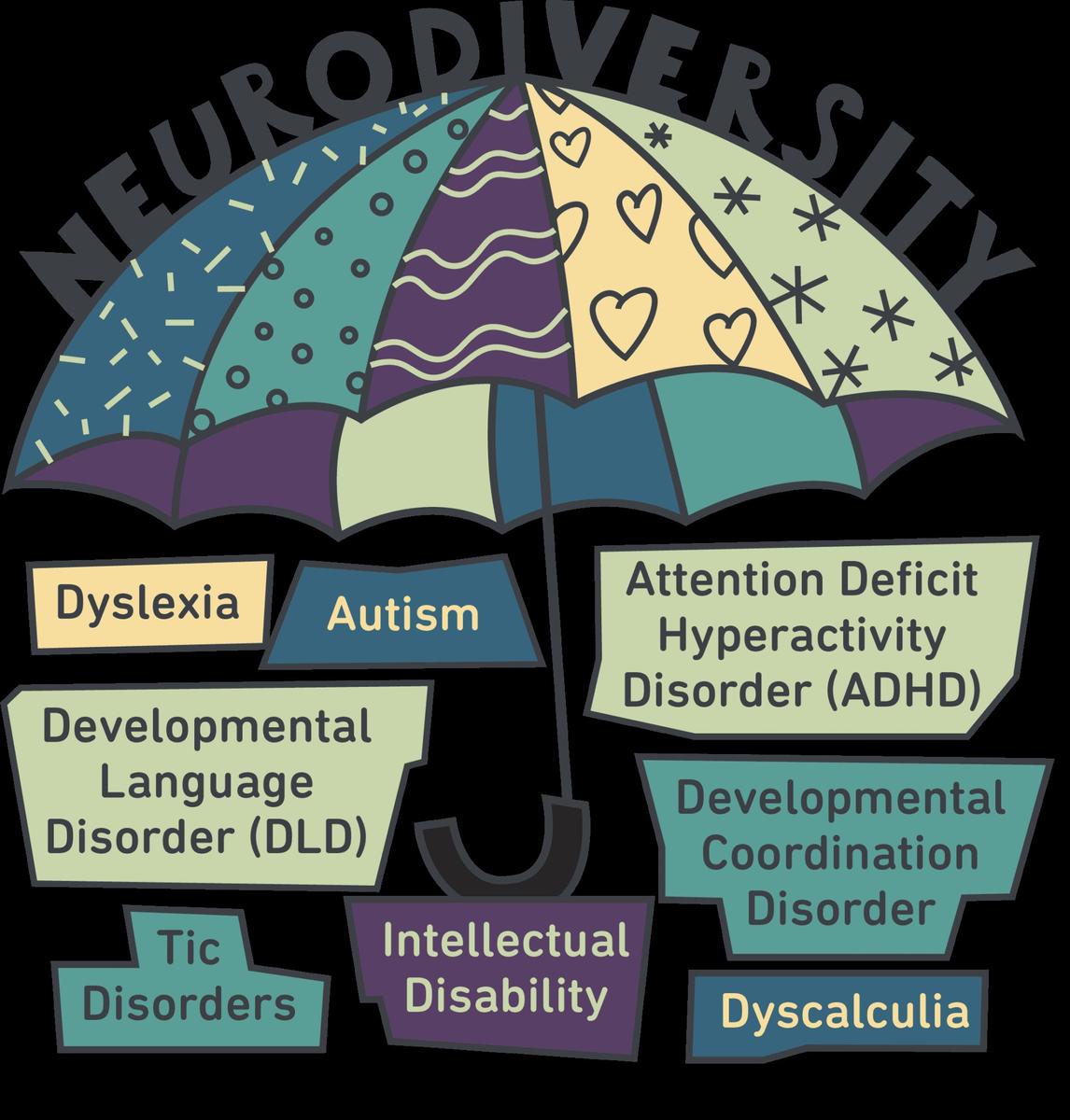WELL BEING

Neurodiversity – what a big word …… but what does it mean?
Simply it means that no 2 brains are the same – they are differently wired and each person has their own way of thinking, interacting and experiencing the world.
There are groups of people whose brains think and work in similar ways and we call this group of brains neurotypical. Then there are smaller groups of brains that work and think in different ways – these groups of brains are neurodiverse.
Is one of these groups better than the other? No, they are just different.
So, what can a neurodiverse brain look like?
It would be so easy if we could look at an actual brain and tell you what type it is – but we can’t. Instead, we look at the behaviour of people, how they learn, what they are interested in and what their strengths are to then make a decision about the way their brain is wired.
Here’s a few to get you started …....
Autism or Autism Spectrum Disorder - this brain impacts how a person interacts and socialises with other people and how they perceive lights, sounds, touch and smells (with some of these causing distress or overload). This brain is highly logical and can be good at remembering facts, detail and patterns.
Dyslexia, Dysgraphia and Dyscalculia – these brains have difficulty with reading/spelling, letter order and orientation, writing and remembering the shape of particular letters and difficulties with maths/number problems.
ADHD – these brains make it harder for you to control your attention or direct it to certain tasks. This makes it hard to sit still or to control impulsive behaviours.
Tourette Syndrome – this brain causes uncontrollable movements and vocal sounds called tics. These are involuntary, so you can’t control or prevent them.
April is Neurodiversity Awareness Month.
So, let’s celebrate everybody’s differences ...... what a boring place it would be if we were all the same.



